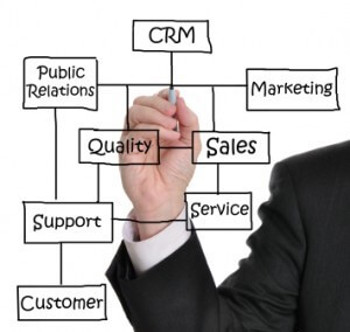
CRM Best Practice: What Can You Actually Achieve From Implementing a CRM System?
Our first CRM Best Practice blog explained that the right way to go about a CRM project is to forget about the detail to begin with and concentrate on the bigger picture.
Implementing a CRM system is not an easy to task to take on. Your initial questions should be based on what you are trying to achieve and why you are looking to invest the time and effort.
Even after you have implemented your system there needs to be some commitment to tweaking and adjusting it as your market and customer change. This process is inevitable as you continually evolve the customer-facing side of your business.
So, if there are some good reasons behind implementing a CRM system you can move forward in the right way.
CRM is a tool, not a strategy
Most importantly, what we need to understand is that implementing a CRM system will NOT improve or grow your business immediately. In the same way that a hammer on its own will not nail two pieces of wood together; you need to wield the hammer, hold it the right way round, take aim and add some effort to swing it. Similarly, in order for your CRM system to improve your business, you need to see it purely as a tool to be used the right way, aimed at a target and wielded for maximum impact. CRM is a tool, not a strategy.
What is your business strategy?
For your CRM tool to be effective you have to know what it is that your business is looking to achieve.
You may already have a good business strategy and know what needs to change in the next two years to grow and improve your business. In which case you can skip this section.
However, if you are like most SME’s - run a good business; make a good profit; but rely (at least partially) on lady luck for strategy and improvement - then now is a good time to make some more concrete plans about which areas of your business you would like to impact with a CRM solution.
The first step is to open your mind and unleash your imagination. What do you want your business to look like? If you are after growth, how much and how are you going to achieve it? If you are after stability, what changes in your business will be required to get there?
What can CRM help you achieve?
A CRM solution can cover a variety of business requirements, but if you are focusing on growth then CRM could help your business through:
- Generating more enquiries
- Improving the conversion ratios and value
- Improving customer retention
- Increasing the value of each customer
- Leveraging your customers as a sales and marketing force
Of course, you could choose to tackle more than one, or even all of them. Although, be warned - biting off more than you can chew, especially with software, can lead to an inevitable consequence of achieving very little in any area.
The devil in the detail...
In my experience, working out what you need to do differently is not hard, and most business owners and managers have plenty of ideas on what could be done better. Often the remedy is simply sending more mailers, better customer profiling, better customer intelligence, better proposal documents, more regular and timely chasing up of proposals, up-sell product matrices etc. You can be certain that CRM (if well implemented) can help with all of these. But what we can’t do is simply say ‘Make it so!’ and expect all of this to happen.
Selecting a high level strategy that is right for your business and your customers is vital. As is spending time on deciding how you need to change your business and how implementing a CRM system will aid these changes.
How do I begin?
My best advice to you now is to begin by trying to answer these questions...
- What do you want your business to look like in 3-5 years time. What is different?
- What level of growth are you looking for?
- How many leads does your business receive per month and how many would you like?
- How good are you at converting opportunities to business? Are some of your employees better at this than others? If yes, why?
- How long do you keep your average customer? What impact would keeping each customer one year longer have?
- How could you actively target your customer base for more references, referrals and recommendations?
By taking these steps you are not only creating good reasons for a CRM investment, you are also defining your business requirements to achieve growth.
Next Best Practice: Is your valuable data locked away in your back office accounting system?
